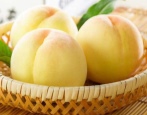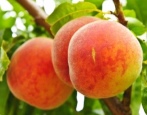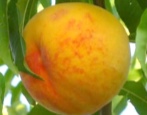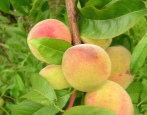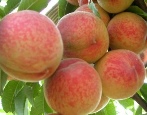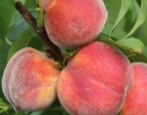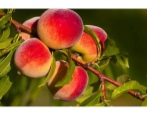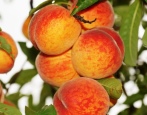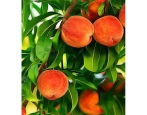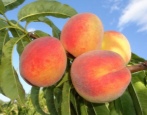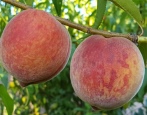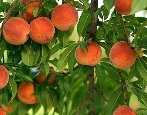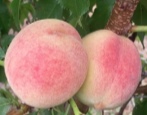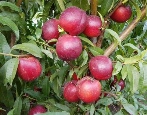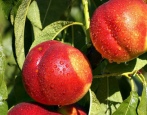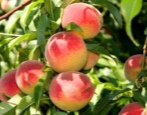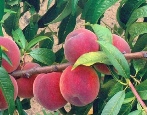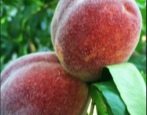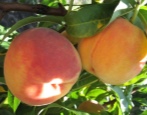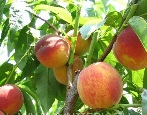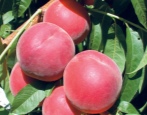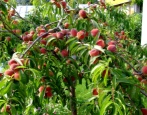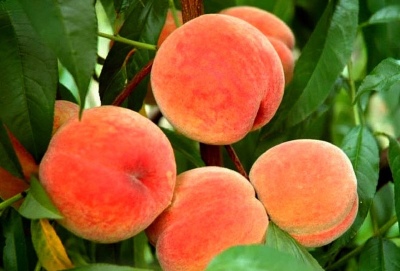
- Authors: Canada
- Appeared when crossing: Cresthaven x Harbinger
- Name synonyms: Harnas
- Growth type: vigorous
- Ripening period: early
- Self-fertility: self-fertile
- Appointment: for fresh consumption
- Yield: high
- Marketability: high
- Transportability: good (up to 3-4 days)
Harnas is one of the most cost-effective dessert peach varieties. Elite is provided by its main characteristics: taste, high marketability, good frost resistance, resistance to diseases and pests.
Breeding history
The Harnas peach crop was bred by renowned Canadian breeders by crossing Cresthaven and Harbinger.
Description of the variety
The tree is vigorous, can reach a height of 5 meters. Has a rounded crown. It blooms in May-June with bell-shaped flowers. The variety is tolerant to curliness, which is important for growing in personal plots.
Fruit characteristics
The fruits are large, spherical. The main color is yellow, but up to 90% of the peach is covered with dotted and spotted blush of red and marbled colors. The fruits have a slight pubescence and a lateral seam characteristic of peaches.
Light yellow pulp of medium density is partially separated from a small pit. Closer to the peel, the flesh turns red.
The average weight of peaches is 90-140 g. Large fruits reach 300 g. Even with a large load of the tree, the fruits do not become smaller. They are very aromatic.
Taste qualities
Harnas peaches are sweet and sour with apricot aftertaste and sweet tart aftertaste. The fruits are very juicy.
In terms of taste, the variety has a tasting score of 4.7 points.
Ripening and fruiting
The variety is classified as early-growing, the crop can be harvested for 3 years. Fruits ripen by the first decade of August, so they can be attributed to early crops.
Yield
The variety has a high yield; on average, 60 kg of fruits are removed from the tree.
Growing regions
For the Harnas variety, the conditions of the temperate climate of Russia are favorable.
The variety has proven itself well in Poland, compared to other varieties, Harnas peaches are the most popular there.
Self-fertility and the need for pollinators
It is a self-fertile variety: it does not require additional pollinators.
Growing and care
Peach seedlings take root quite well. One-year and two-year-old seedlings adapt best.
Planting time depends on climatic conditions. In the southern and adjacent regions, autumn planting is recommended. For spring planting (March-April), the planting holes should be prepared in the fall.
When planting, you need to choose a site without drafts, which Harnas is very afraid of. It is very good if the north side of the site is fenced off with something (buildings or fencing).
The seedling should be tied to a support peg.
The first starting 3 weeks after planting are considered the most important for the seedling to root in its new location. It is very important during this period to properly carry out post-plant pruning and competently water the young tree. When pruning, shoots are left no more than 40-45 cm. The first month, watering is required 2 times a week, 1 bucket.
For a well-rooted tree in dry weather, the tree requires watering 2 buckets under the trunk every 10 days. After watering, shallow loosening of the soil is desirable. Care should be taken not to stagnate water around the trunk.
The variety is unpretentious in care and requires the first 3 years of minimal feeding.
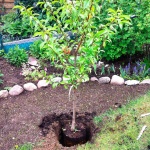
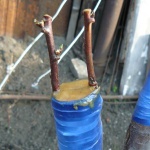
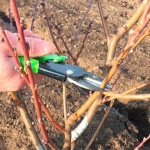
Frost resistance and the need for shelter
Like all Canadian varieties, Harnas has a high winter hardiness. The tree and flower buds are not afraid of spring frosts, they do not cause crop losses.
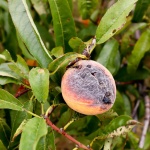
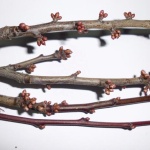
Review overview
Gardeners note the high marketability of the variety. The fruits tolerate transport movements well for 4 days, they are excellently stored in refrigerated chambers.
The variety is praised for the fact that ripe fruits do not crumble and retain their integrity.
Experienced gardeners are advised to pay special attention to the regulation of ovaries and harvest. Excessive ovary and harvest can deplete the tree and lead to death.
